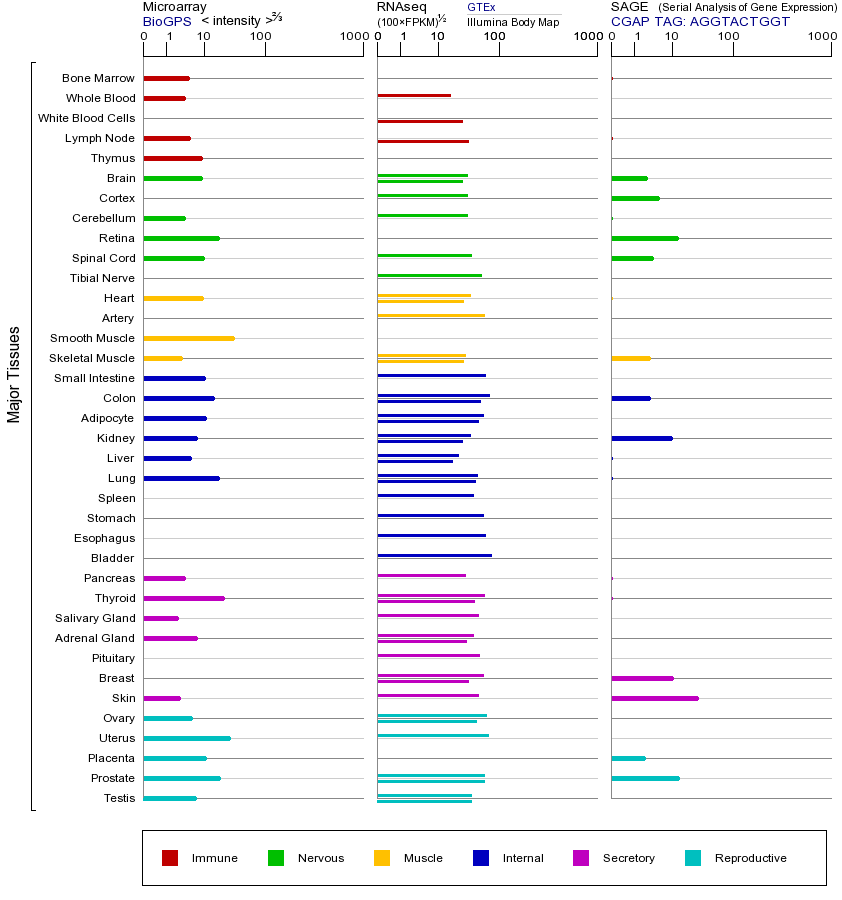ABL1 (ABL proto-oncogene 1, non-receptor tyrosine kinase)
- symbol:
- ABL1
- locus group:
- protein-coding gene
- location:
- 9q34.12
- gene_family:
- SH2 domain containing
- alias symbol:
- JTK7|c-ABL|p150
- alias name:
- None
- entrez id:
- 25
- ensembl gene id:
- ENSG00000097007
- ucsc gene id:
- uc004bzv.4
- refseq accession:
- NM_007313
- hgnc_id:
- HGNC:76
- approved reserved:
- 1986-01-01
ABL1基因(Abelson murine leukemia viral oncogene homolog 1)属于ABL基因家族,该家族还包括ABL2基因,它们共同编码非受体型酪氨酸激酶,参与细胞增殖、分化、粘附和应激反应的调控。ABL1基因位于人类9号染色体(9q34.12),其编码的ABL1蛋白在细胞信号传导中起核心作用,尤其在细胞骨架重组、DNA损伤修复和细胞凋亡过程中发挥关键功能。ABL1蛋白的激酶活性受其N端肉豆蔻酰化修饰和C端结构域的调控,正常情况下处于自抑制状态。当ABL1基因发生突变或染色体易位(如与BCR基因融合形成费城染色体,即t(9;22)(q34;q11)),会导致激酶活性异常激活,进而引发慢性髓性白血病(CML)和部分急性淋巴细胞白血病(ALL)。ABL1基因的常见突变包括点突变(如T315I)和缺失突变,这些突变可能导致对靶向药物(如伊马替尼)的耐药性。ABL1过表达会促进细胞增殖和抑制凋亡,与多种癌症的发生发展相关;而ABL1表达降低则可能影响细胞对DNA损伤的修复能力,增加基因组不稳定性。ABL1基因还与神经系统发育和功能有关,其异常表达可能影响神经元迁移和突触可塑性。ABL基因家族的共性包括编码具有SH2和SH3结构域的酪氨酸激酶,参与细胞信号转导网络的调控,并在发育和疾病中发挥多重作用。针对ABL1异常活化的靶向治疗已成为白血病治疗的重要策略,但耐药突变仍是临床挑战。
This gene is a protooncogene that encodes a protein tyrosine kinase involved in a variety of cellular processes, including cell division, adhesion, differentiation, and response to stress. The activity of the protein is negatively regulated by its SH3 domain, whereby deletion of the region encoding this domain results in an oncogene. The ubiquitously expressed protein has DNA-binding activity that is regulated by CDC2-mediated phosphorylation, suggesting a cell cycle function. This gene has been found fused to a variety of translocation partner genes in various leukemias, most notably the t(9;22) translocation that results in a fusion with the 5' end of the breakpoint cluster region gene (BCR; MIM:151410). Alternative splicing of this gene results in two transcript variants, which contain alternative first exons that are spliced to the remaining common exons. [provided by RefSeq, Aug 2014]
这个基因是编码参与多种细胞过程,包括细胞分裂,粘着,分化,和响应于压力的蛋白酪氨酸激酶一个原癌基因。的蛋白质的活性被负由其SH3结构域,由此缺失编码区中的癌基因本领域的结果调节。在普遍表达的蛋白质具有由CDC2介导的磷酸化调节的,这表明细胞周期功能的DNA结合活性。该基因已经发现融合于各种易位伴侣基因的各种白血病,最显着的T(9; 22),其导致与BCR基因基因的5‘端融合易位(BCR; MIM:151410) 。该基因导致两个转录变异体,其包含被接合到剩余的共同的外显子的替代第一外显子的选择性剪接。 [由RefSeq的,2014年8月提供]
基因本体信息
ABL1基因(以及对应的蛋白质)的细胞分布位置:
- 质膜
- 细胞质
- 细胞外
- 高尔基体
- 囊泡
- 细胞骨架
- 内质网
- 细胞核
- 内体
- 溶酶体
- 线粒体
ABL1基因的本体(GO)信息:
| 名称 |
|---|
| 4014 Ras signaling pathway [PATH:hsa04014] |
| 4012 ErbB signaling pathway [PATH:hsa04012] |
| 4110 Cell cycle [PATH:hsa04110] |
| 4722 Neurotrophin signaling pathway [PATH:hsa04722] |
| 4360 Axon guidance [PATH:hsa04360] |
| 5200 Pathways in cancer [PATH:hsa05200] |
| 5206 MicroRNAs in cancer [PATH:hsa05206] |
| 5220 Chronic myeloid leukemia [PATH:hsa05220] |
| 5416 Viral myocarditis [PATH:hsa05416] |
| 5130 Pathogenic Escherichia coli infection [PATH:hsa05130] |
| 5131 Shigellosis [PATH:hsa05131] |
| 名称 |
|---|
| Axon guidance |
| CDO in myogenesis |
| Developmental Biology |
| Factors involved in megakaryocyte development and platelet production |
| Fcgamma receptor (FCGR) dependent phagocytosis |
| Hemostasis |
| Immune System |
| Innate Immune System |
| Myogenesis |
| Regulation of actin dynamics for phagocytic cup formation |
| RHO GTPase Effectors |
| RHO GTPases Activate WASPs and WAVEs |
| Role of Abl in Robo-Slit signaling |
| Signal Transduction |
| Signaling by Rho GTPases |
| Signaling by Robo receptor |
| 疾病名称 | 关系值 | NofPmids | NofSnps | 来源 |
| Myeloid Leukemia, Chronic | 0.371405336 | 1406 | 7 | BeFree_CTD_human_GAD_LHGDN_ORPHANET |
| Precursor Cell Lymphoblastic Leukemia Lymphoma | 0.184119871 | 183 | 1 | BeFree_CTD_human_LHGDN |
| Mammary Neoplasms | 0.122995792 | 3 | 0 | BeFree_CTD_human_LHGDN |
| Carcinogenesis | 0.121900093 | 7 | 0 | BeFree_CTD_human |
| Precancerous Conditions | 0.120271442 | 2 | 0 | BeFree_CTD_human |
| Esophageal Neoplasms | 0.120271442 | 2 | 0 | BeFree_CTD_human |
| Liver neoplasms | 0.12 | 1 | 0 | CTD_human |
| Neoplasms, Experimental | 0.12 | 1 | 0 | CTD_human |
| Adenocarcinoma | 0.12 | 1 | 0 | CTD_human |
| LEUKEMIA, ACUTE LYMPHOBLASTIC, SUSCEPTIBILITY TO, 3 | 0.12 | 0 | 0 | ORPHANET |
联系方式
山东省济南市章丘区文博路2号 齐鲁师范学院 genelibs生信实验室
山东省济南市高新区舜华路750号大学科技园北区F座4单元2楼
电话: 0531-88819269
E-mail: product@genelibs.com
微信公众号
关注微信订阅号,实时查看信息,关注医学生物学动态。







